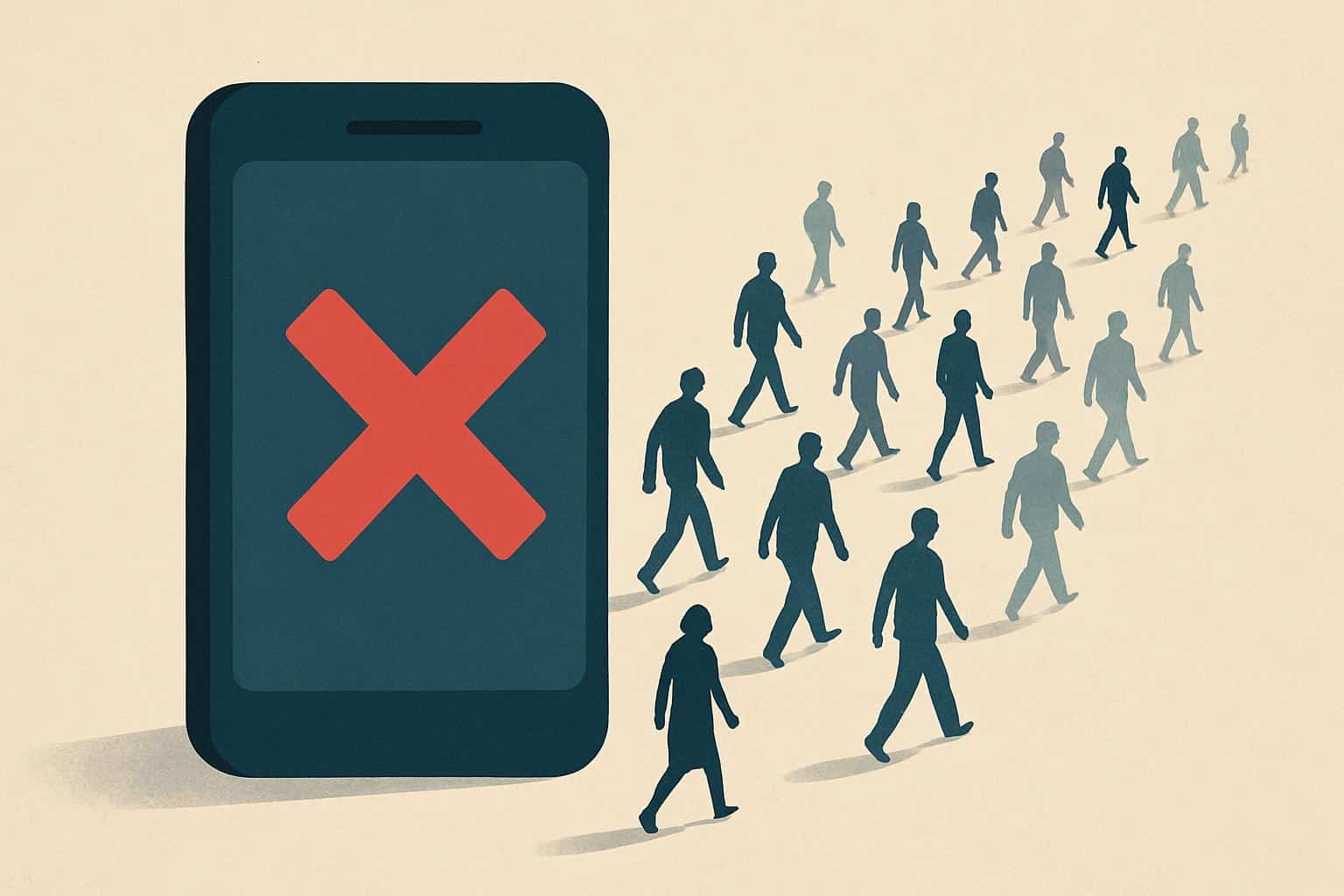The quietest revolution in tech is being shaped by literally the next generation. On campuses, in workplaces and in community groups, people are purging their accounts, deleting apps from their phones and twiddling with privacy settings to make sure that their old posts are set to “Friends” — not “Public.” What started as sporadic “digital detoxes” has now hardened into a mass egress from social media.
It’s not just fatigue with another redesign or ad load. It is a wholesale recalibration of attention. Teachers are planning phone-free “school days.” Book clubs and running groups now serve as accountability circles for quitting apps. Even creators who amassed big followings are migrating audiences to newsletters, SMS lists and in-person meetings to avoid the algorithmic whiplash.

Why People Are Leaving: Mental Health, Trust and Value
Three forces have surfaced repeatedly: mental health, trust and value. The U.S. Surgeon General has cautioned that heavy social media use can correlate with harm to youth well-being, and called for greater oversight. The American Psychological Association advises age-appropriate design and active adult supervision. Commentators from all sides of the spectrum believe that social media are polarizing society and their use increases political polarization. Pew Research Center surveys indicate that many Americans think social media’s impact on the direction of things in this country is mostly negative.
Time is the other lever. According to data.ai, some 35 hours a week can be spent on mobile, with social and communications apps particularly sticky. The mood of the nation’s youth is impossible to generalize, but Common Sense Media reports that teens say they feel both pressure to be online and conflicted about how it makes them feel. When the product requires that much attention and delivers diminishing returns, churn comes.
As the platforms have pursued monetization, trust has been eroded. The pattern is a familiar one: a service to which you have become happily addicted becomes clogged with ads, pay-to-play visibility and recommendation tweaks that feel like they are punishing loyal users. The author Cory Doctorow termed this “enshittification” — a pattern many now cite as the tipping point that prompted them to leave.
The Evidence on Logging Off and Mental Health Outcomes
The argument for stepping back is not just vibes. A frequently cited Stanford and NYU study determined that shutting down Facebook for a few weeks improved users’ self-reported well-being, decreased political polarization and cleared time for offline activities. Academics at the University of Bath found that for many regular users, logging off Facebook, Twitter and similar sites for a week resulted in feeling less anxious and depressed as well as seeing an improvement in sleep quality.
And the benefits weren’t limited to those who stayed off the platforms in perpetuity. Even structured breaks were enough to disrupt daily rhythms to a point that they stuck. Therapists and school counselors say that many teenagers who have added friction — logging out, moving apps off their home screens (and even putting phones in “light” modes on weekdays) — promote a healthier relationship to technology later.
How the Exit Is Playing Out Across Communities and Apps
Indeed, grassroots groups have normalized the collective “sign-offs,” at which friends rendezvous to download their data and delete accounts together. The Luddite Club, a youth movement that preaches simpler phones and more analog time, has inspired copycats in new cities. Reddit communities like r/nosurf and r/digitalminimalism offer road maps for life after feeds.
Behavior is moving in two directions: simpler and smaller. On the low-tech end, Counterpoint Research points to a resurgent interest in feature phones among younger buyers, and firms like Light tout ongoing demand. On the lower end, communities are flocking to group chats, private forums, email lists, and RSS — tools that favor deliberate membership over mass reach.

Creators and brands are hedging, as well. Many now treat social platforms as a top-of-funnel play only, leading audiences to owned channels such as newsletters, membership programs and live events. It cuts the reliance on capricious algorithms and ad policies, and it shifts the definition of “engagement” from either an angry or a mindless thumb tap to a ticket sold or a volunteer hour booked.
Can Platforms Stop the Bleed as Users Seek Alternatives?
Platforms are trying. New time-limit reminders, teen safety features and chronological feeds are in the works to address critics. Others are concentrating on longer-form content and creator monetization to prevent users from drifting. Regulators have entered the chat, too: The European Union’s Digital Services Act is requiring more transparency and control while numerous countries and U.S. states are promoting age checks, default privacy settings and a safer design for minors.
But the structural problem is still there: ad-driven models incentivize attention capture. If users are selecting smaller, slower and saner networks, then the old growth playbook reaches the end of the road. Already advertisers are moving their spending to retail media, search and creator partnerships that don’t rely solely on big feeds.
What to Watch Next as the Social Media Landscape Shifts
Signals will become less about headline user counts and more about time spent, ad pricing and creator migration. Phone-free school policies, the age of feature phones, and the health of newsletter economies serve as telltales. We’re starting to have an exodus because of it — if people are reporting increased focus, better sleep and mood off-platform every single week, the exit compounds.
For people weighing a sign-off, sign-out experts recommend three specific steps:
- Export your data and contacts.
- Establish alternatives for key connections (group texts, email threads, a group forum).
- Add friction to avoid backsliding.
Whether you’re leaving for a week or forever, the path is the same: take your relationships somewhere algorithms can’t set the terms.
In hindsight, the most remarkable thing here will have been its modesty. People are not eschewing technology; they are opting for tools that respect their time. Ten years of living on the timeline later, the mass exodus from social media is not a revolt or even some sort of greatest-hits compilation; it’s more like both a slow fade-out and a fast shotgun blast to the face — it has already been happening.

